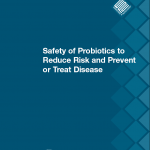 The use of probiotics and saccharomyces Boulardii as part of a Nutritional Therapists strategic intervention with many of their patients is very common, and with good reason, they address and correct many functional health problems that involve the mucosal immune system.
The use of probiotics and saccharomyces Boulardii as part of a Nutritional Therapists strategic intervention with many of their patients is very common, and with good reason, they address and correct many functional health problems that involve the mucosal immune system.
A recent review from The Agency For Health Care Research and Quality (a USA organisation) undertook a comprehensive look at probiotics.
According to this review on the safety of probiotics, safety aspects seem to have been forgotten or have been addressed in general terms only in the majority of the large volume of studies on the subject. This review only looks at safety rather than application and concludes:
There is a lack of assessment and systematic reporting of adverse events in probiotic intervention studies, and interventions are poorly documented. The available evidence in RCTs does not indicate an increased risk; however, rare adverse events are difficult to assess, and despite the substantial number of publications, the current literature is not well equipped to answer questions on the safety of probiotic interventions with confidence.
It set out to:
To catalogue what is known about the safety of interventions containing Lactobacillus, Bifidobacterium, Saccharomyces, Streptococcus, Enterococcus, and/or Bacillus strains used as probiotic agents in research to reduce the risk of, prevent, or treat disease.
Data Sources.
We searched 12 electronic databases, references of included studies, and pertinent reviews for studies addressing the safety of probiotics from database inception to August 2010 without language restriction.
Review Methods.
We identified intervention studies on probiotics that reported the presence or absence of adverse health outcomes in human participants, without restriction by study design, participant type, or clinical field. We investigated the quantity, quality, and nature of adverse events.
Results.
The search identified 11,977 publications, of which 622 studies were included in the review. In 235 studies, only nonspecific safety statements were made (“well tolerated”); the remaining 387 studies reported the presence or absence of specific adverse events. Interventions and adverse events were poorly documented. A number of case studies described fungemia and some bacteremia potentially associated with administered probiotic organisms. Controlled trials did not monitor routinely for such infections and primarily reported on gastrointestinal adverse events. Based on reported adverse events, randomised controlled trials (RCTs) showed no statistically significantly increased relative risk (RR) of the overall number of experienced adverse events (RR 1.00; 95% confidence interval [CI]: 0.93, 1.07, p=0.999); gastrointestinal; infections; or other adverse events, including serious adverse events (RR 1.06; 95% CI: 0.97, 1.16; p=0.201), associated with short-term probiotic use compared to control group participants; long-term effects are largely unknown.
Existing studies primarily examined Lactobacillus alone or in combination with other genera, often Bifidobacterium. Few studies directly compared the safety among different intervention or participant characteristics. Indirect comparisons indicated that effects of delivery vehicles (e.g., yogurt, dairy) should be investigated further. Case studies suggested that participants with compromised health are most likely to experience adverse events associated with probiotics. However, RCTs in medium-risk and critically ill participants did not report a statistically significantly increased risk of adverse events compared to control group participants.
Comment
Probiotics as described in this review were noteworthy in that there was no clear trend towards adverse events with probiotics in randomised controlled trials, though like many prospective trials the studies were poorly designed to capture adverse events accurately.
They are safe to use in all except the most immunocompromised patients – those in ICU wards, where there application will need to be undertaken in a carefully considered strategy.
References
Safety of Probiotics to Reduce Risk and Prevent or Treat Disease. View Full Paper





